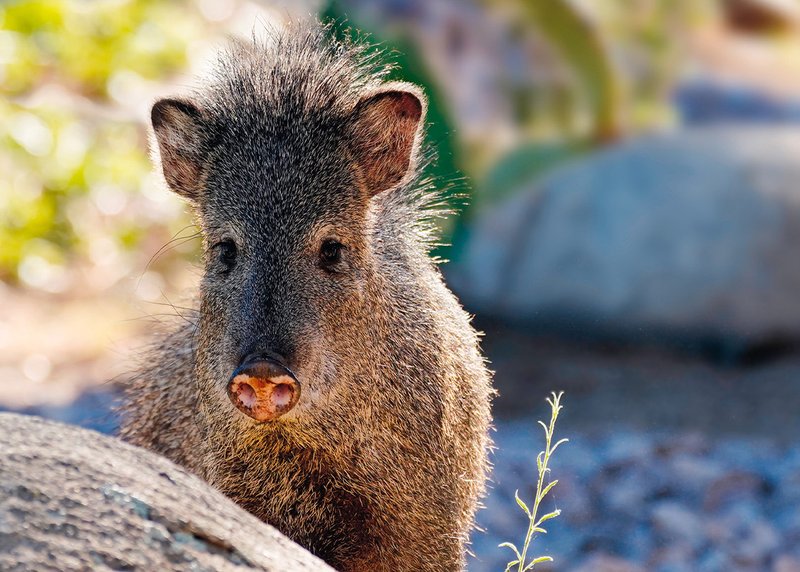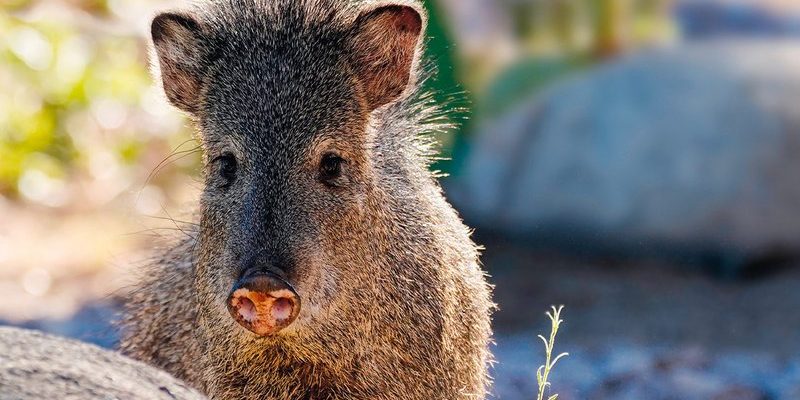
Javelinas, or collared peccaries, as scientists call them, belong to a family of animals that diverged from other species millions of years ago. This journey is not just about survival; it’s a dance with nature, shaped by changing environments, adaptations, and the quest for food and safety. If you’ve ever wondered how javelinas came to be and what makes them tick, you’re in for an enlightening ride!
Meet the Javelina
Javelinas are often mistaken for pigs, but they belong to a different family called Tayassuidae. This family branched off from the more familiar Suidae family (which includes pigs) around 40 million years ago. Javelinas are about the size of a medium dog, with short legs, a stocky body, and a characteristic “collar” of white fur around their necks. Imagine a pig with a flair for the dramatic—complete with a stylish fur accessory!
These creatures are primarily found in Central and South America, as well as in the southwestern U.S. regions like Arizona and Texas. They thrive in diverse habitats, from dense forests to arid deserts. You might be wondering how they manage in such varying environments. Well, javelinas are incredibly adaptable, which is part of their evolutionary success story.
Physical Features and Adaptations
Javelinas have some fascinating physical features that reflect their adaptability. Their sharp sense of smell helps them locate food, which primarily consists of roots, fruits, and vegetation. These omnivorous eaters can be seen rummaging through the underbrush, snacking on whatever they can find. Their tough skin is also a great defense mechanism, giving them the ability to survive in harsh environments.
Moreover, javelinas possess a keen sense of social structure. They usually travel in groups called herds, which can range from 2 to 20 individuals. Living in a herd not only offers protection against predators but also plays a crucial role in their survival. They communicate through various vocalizations, body language, and even scent marking, creating a rich social life that’s both complex and engaging.
The Evolutionary Timeline
Now, let’s take a step back and look at the evolutionary timeline of javelinas. During the Eocene epoch (about 56 to 34 million years ago), the ancestors of javelinas started diverging from other mammals. These early relatives began adapting to their environments in ways that would set the stage for their modern descendants.
As the world changed, so did the javelina’s ancestors. They evolved in response to major climatic shifts, such as the emergence of tropical forests and the expansion of grasslands. Interestingly, the split between the javelina line and the pig line happened somewhere around 20 to 30 million years ago, creating two distinct branches of animals that adapted to their changing worlds in different ways.
Adaptations to Survival
During the Miocene epoch (about 23 to 5 million years ago), javelinas began refining their adaptations. They developed features that allowed them to thrive in increasingly diverse ecosystems. For instance, their strong legs and agile bodies help them navigate rocky terrains while foraging for food. Additionally, javelinas can tolerate a range of habitats, showing just how versatile they are.
Their ability to thrive in different environments is also visible in their diet. Depending on what’s available seasonally, they can switch between herbivorous and omnivorous eating habits. This flexibility has played a significant role in their survival throughout their evolutionary journey.
Javelinas in the Modern World
Fast forward to today, and javelinas continue to adapt to human presence. While they once roamed freely in wild landscapes, they are now also found in suburban areas, rummaging through gardens and trash. You might think of them as nature’s little scavengers, adapting to whatever resources they can find.
Yet, this adaptability also raises concerns. As humans encroach on their habitats, it’s vital to balance coexistence. Many communities are now working to understand javelinas better, promoting awareness about their habits and needs. Here’s the thing: recognizing their role in the ecosystem helps us appreciate these creatures even more. They contribute to seed dispersal, helping plant life flourish.
Conservation Efforts
Conservation efforts play a crucial role in ensuring the future of javelinas. While they are not endangered, habitat loss and fragmentation pose significant threats. Organizations dedicated to wildlife preservation are working hard to create safe spaces for javelinas and educate the public about their ecological importance.
By fostering understanding and respect for wildlife, we can ensure that javelinas continue to thrive. Just like the stories of our ancestors shape our identities, the evolutionary history of javelinas helps define their role in nature today.
Final Thoughts on the Javelina’s Journey
The evolutionary history of the javelina is a captivating blend of adaptation, survival, and resilience. From their early ancestors navigating changing landscapes to their modern-day antics in suburban areas, these creatures tell a story of evolution in action.
By appreciating their journey, we’re reminded of the intricate web of life we’re all part of. So, the next time you spot a javelina, take a moment to reflect on its extraordinary evolutionary path. After all, understanding where they come from can deepen our connection to the natural world around us.

